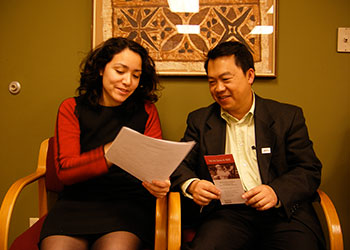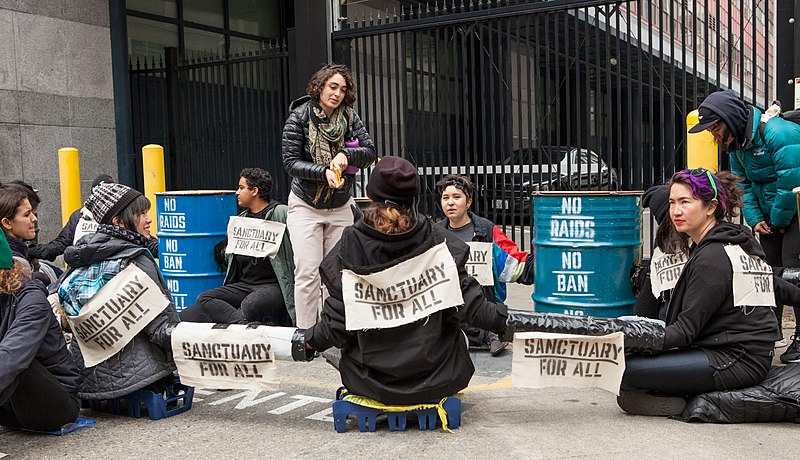Actual a partir del 23 de octubre de 2020.
¿Qué pasa si mi prueba de COVID-18 es positivo?
Respuesta: Alguien del departamento de salud público se va comunicar con Ud. Algún trabajador de salud que está entrenado llama a personas que según están positivos de COVID-19 para hacer preguntas de sus síntomas, como es que fueron infectados, y quienes hayan infectado. Además, dan información en como Ud., su familia y la comunidad pueden estar seguros y estar saludable.
¿Qué es Seguimiento de Contacto?
R. Seguimiento de Contacto ayuda en ralentizar la propagación de COVID-19. Seguimiento quiere decir que es buscar y hablar con las personas que están infectados de COVID-19, y luego buscar y hablar con personas con que han tenido contacto por si acaso han sido infectados. Si todas estas personas se quedan en casa y no acercarse a otros, entonces no pueden ralentizar la propagación de esta enfermedad. Es muy importante que todos se quedan en casa, porque, aunque algunas personas que tienen COVID-19, y no se sienten enfermos, todavía existe la posibilidad que pueden contagiar a otras personas.
¿Porque es notificado Departamento de Salud de Minnesota si soy positive de COVID-19?
R. Médicos, enfermeras, hospitales y laboratorios reportan los nombres de personas que son positivos de COVID-19 al Departamento de Salud, en la misma manera que reportan otras enfermedades contagiosas. Incluso, ellos dan los resultados de la prueba a los que son positive y dan información de los pasos que necesitan que tomar.
¿Puede el personal del Departamento de Salud preguntar de mi estado de inmigración o de mi familia?
R. El personal del Departamento de Salud no va a preguntar de su estado de inmigración. El personal del Departamento de Salud solamente está preocupado en prevenir la propagación de COVID-19.
¿Puedo yo negar en contestar las preguntas?
R. Usted tiene el derecho de negar de contestar cualquier o todas las preguntas. Contestando las preguntas ayuda mucho porque el Departamento de Salud notifica a personas que quizá han sido expuestos y ellos puede ayudar en prevenir la propagación de este virus a otros.
Yo no quiero compartir información de mi familia o pareja. ¿Puedo yo negar de dar esta información?
R. Ud. puede negar dar información de su familia o pareja. Contestando las preguntas ayuda el Departamento de Salud notificar personas que quizá han sido expuestos y ellos puede ayudar en prevenir la propagación de este virus a otros.
¿Porque el Departamento de Salud pregunta con quien yo ha tenido contacto si la prueba de COVID-19 es positivo?
R. El personal del Departamento de Salud quiere identificar a las personas que Usted ha tenido contacto para ralentizar la propagación de COVID-19.
¿Puede el Departamento de Salud compartir mi nombre u otra información con cualquier persona que yo ha tenido contacto antes de enterarme que soy positivo de COVID-18?
R. Su información es guardado estrictamente confidencial solamente si Ud. da permiso de compartir su nombre. En circunstancias raras, el Departamento de Salud quizá tiene que compartir su nombre con su empleo, escuela o centro de cuidar niños para proteger la salud y seguridad de otros, aunque Ud. no esté de acuerdo. El Departamento de Salud hará cualquier esfuerzo de comunicarse con Usted y explicar porque su nombre tiene que ser compartido antes de hacerlo.
¿Puede el público tener acceso a la información que yo comparto con el Departamento de Salud?
R. Las respuestas que Ud. comparta son guardadas en una base de sistema seguro. El público general no tiene acceso al base de sistema seguro.
¿Puede la policía o cualquier agencia judicial tener acceso a la información que yo comparto al personal del Departamento de Salud?
R. El Departamento de Seguridad al Publico tienen acceso a su domicilio si todavía está aislado por ser positive de COVID-19, pero no tiene acceso a su nombre u otros datos. Si Ud. no quiere compartir su domicilio con el Departamento de Seguridad al Publico entonces Ud. si puede negar de compartir o verificar su domicilio.
¿Puede Immigration & Customs Enforcement (ICE) tener acceso a la información que yo comparto?
R. Si ICE tiene una razón oficial para ir al domicilio, ICE se puede comunicar con el despacho 911 y solamente se les dará información que en esa dirección una persona está aislado por tener COVID-19. ICE no tendrá acceso de su nombre o cualquier otra información. Si Ud. no quiere compartir su domicilio con el centro de despacho 911, Ud. puede negar de compartir o verificar su domicilio.
¿Yo no quiero que mi información sea compartida a mi empleador, como puedo prevenir esto?
R. El personal no compartirá su información con su empleador, solamente si Ud. es trabajador de salud, o si Ud. trabaja en otro oficio y Ud. da permiso para que el personal del departamento de salud se comunica con el negocio. Si Ud. es trabajador de salud, el personal puede compartir su información con su empleador. Esto es hecho para proteger los pacientes.
¿Puede el empleador desocuparme si la prueba resulta que soy positivo para COVID-19?
R. Es ilegal para un empleador de desocuparlo por ser positivo de COVID-19. El Departamento de Salud le puede dar una notificación a su empleador que su prueba es positivo y que Ud. tiene que ser aislado.
¿Dónde puedo encontrar más información del COVID-19?
- Personas pueden llamar a Minnesota Department of Health (MDH) COVID-19 Minnesota Línea de asistencia a: 651-297-1304 o 1-800-657-3504.
- Además, puede encontrar información en la red: http://www.health.state.mn.us/diseases/coronavirus/index.html.
- Información específica de Seguimiento de Contacto se puede encontrar en: https://www.health.state.mn.us/diseases/coronavirus/tracing/html.
Recuerda: El propósito de Seguimiento de Contacto es para ralentizar la propagación de COVID-19 y tener el público seguro.
Haga click aquí para encontrar el archivo PDF.





